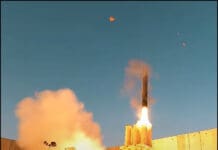
This post is also available in:
 עברית (Hebrew)
עברית (Hebrew)
Every mission that Marine or Army formations have to carry out is more difficult when you take it into an urban environment. This is why the US Army has been studying experimental technologies to fight in dense urban areas and underground.
“Fighting in dense urban environments and the unique challenges it presents is still not totally understood, and this study was the front-end look at identifying and defining those materiel challenges to drive where investments need to be for this operational environment,” said Bob Hesse, technical lead coordinator for the Army Subterranean and Dense Urban Environment Materiel Developer Community of Practice.
The most recent “tabletop” exercise looked at the gear troops might need to get through those intense battle scenarios. One such piece of tech would be using sensors that attach to the exterior building wall to help troops visualize the interior layout, according to armytimes.com.
The Marines recently launched Project Metropolis II, a five-year effort to better prepare Marines for likely future urban battles. “Across the warfighting functions — whether it’s intelligence, surveillance or reconnaissance, collections, maneuver, force protection, command and control, logistics and sustainment — all of those things are complicated and challenged by the compartmentalized terrain that’s present in the urban environment and the three-dimensional nature of the urban environment,” said Marine Corps Brig. Gen. Christian Wortman, commanding general of the Marine Corps Warfighting Laboratory, and vice chief of Naval Research.
That multi-dimension challenge grows with the subterranean. For both above ground and underground, robotics will play a major role. The Squad X project by Defense Advanced Research Projects Agency, for example, is blending robots into dismounted formations.

























